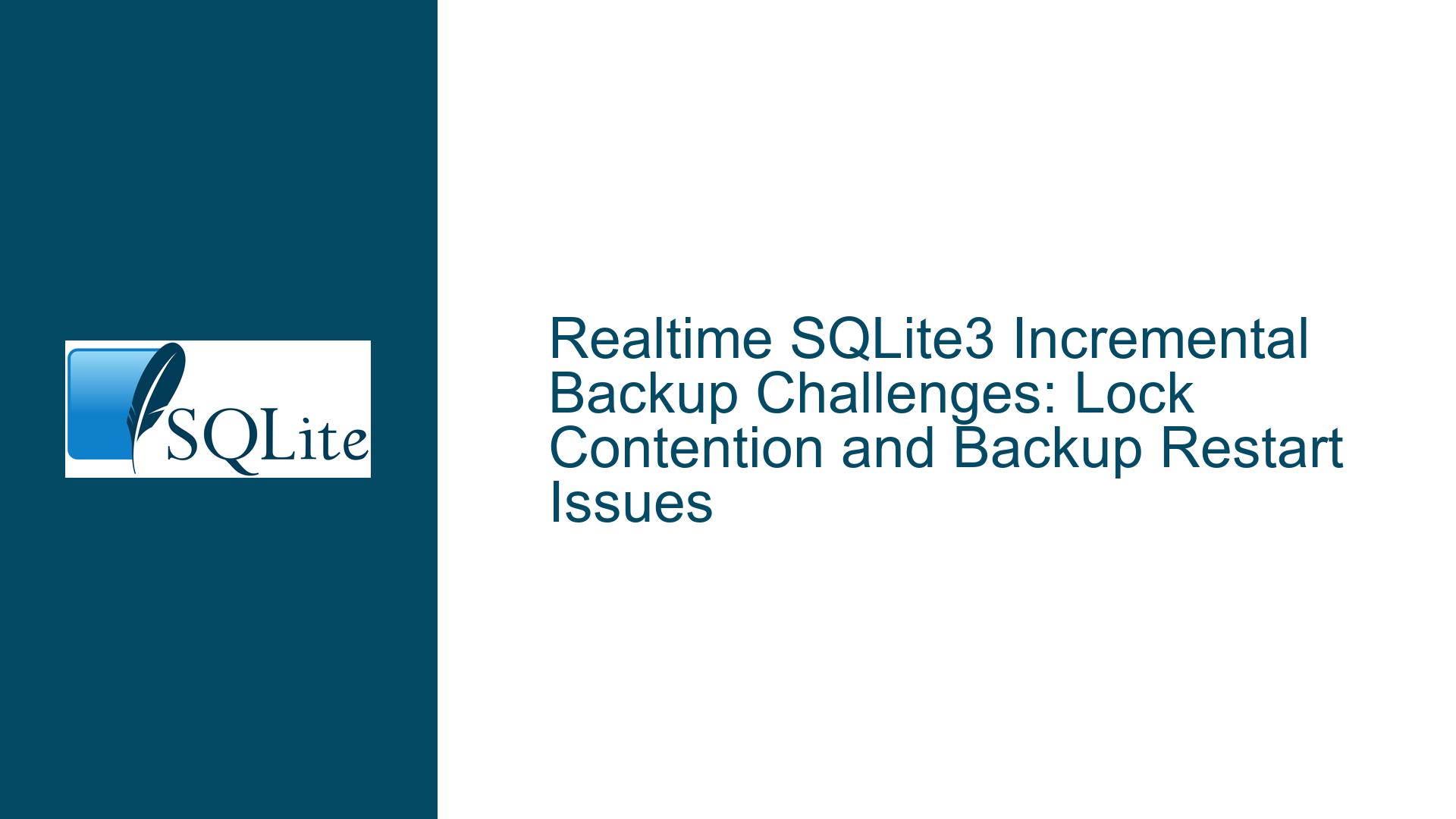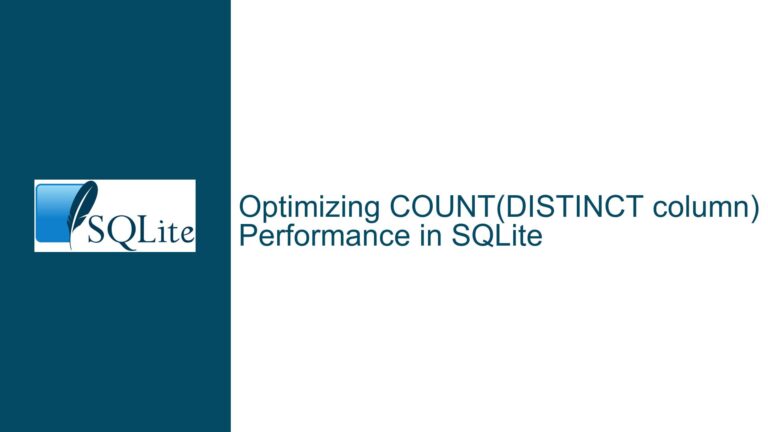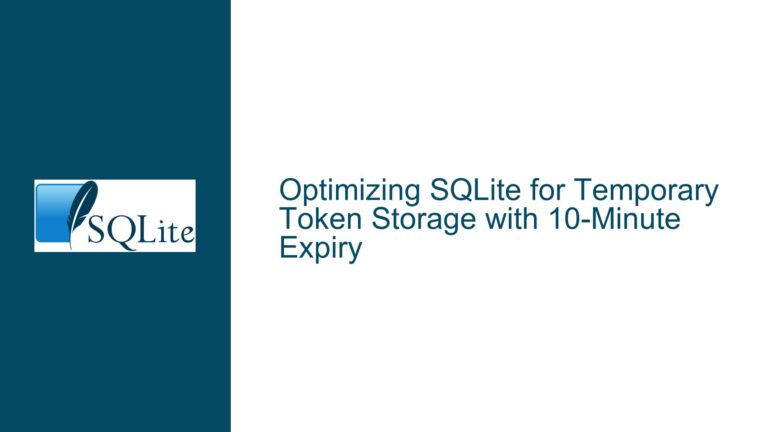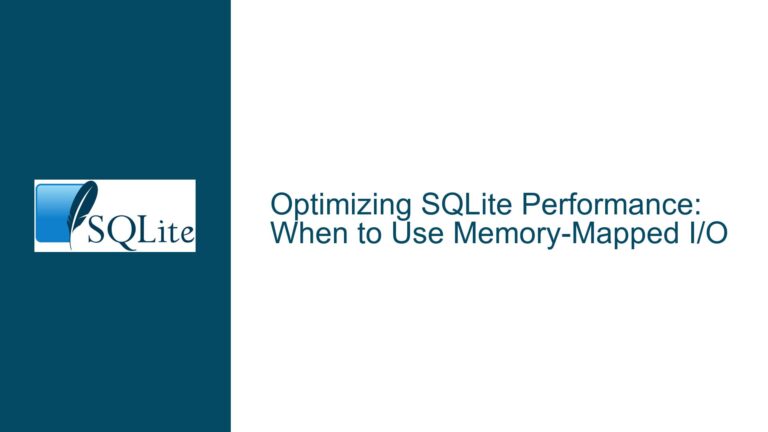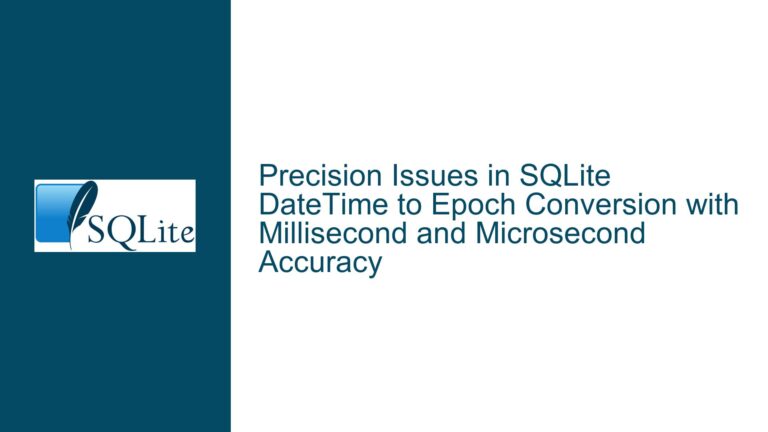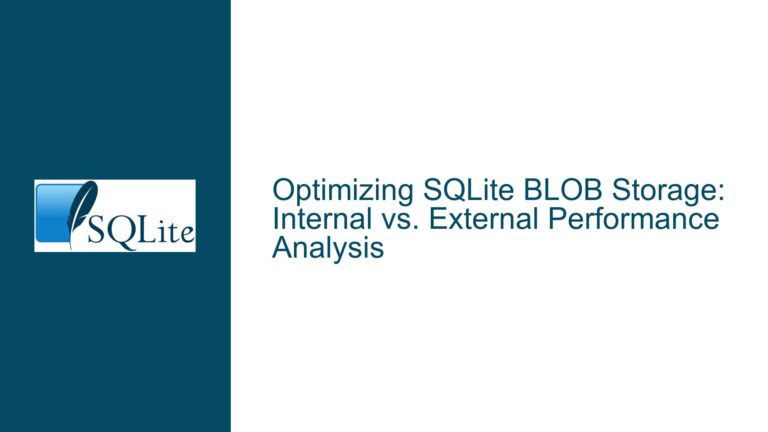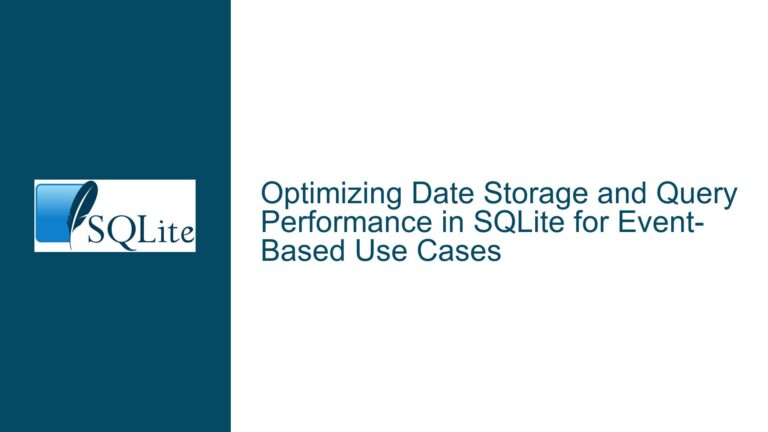Realtime SQLite3 Incremental Backup Challenges: Lock Contention and Backup Restart Issues
Understanding SQLite3 Online Backup API Behavior Under Frequent Write Operations
The core challenge revolves around implementing a real-time incremental backup mechanism for SQLite databases using the Online Backup API. A C-based daemon attempts to mirror changes made by a Python application that inserts records every 0.1 seconds into a source database. The backup process fails to reflect these changes incrementally, despite expectations that the backup database should remain consistent with the source. Key symptoms include incomplete synchronization, repeated backup restarts due to locks, and uncertainty about whether the backup process must be reinitialized after interruptions.
The Online Backup API (sqlite3_backup_init, sqlite3_backup_step, sqlite3_backup_finish) is designed to create a point-in-time snapshot of the source database. However, its behavior under rapid transactional workloads differs significantly from naive real-time replication. The API operates by copying database pages incrementally from the source to the destination. If the source database is modified mid-backup, the backup process restarts from the beginning to ensure transactional consistency. This restart behavior is not explicitly obvious in the API’s return codes (e.g., SQLITE_BUSY, SQLITE_LOCKED), leading to misinterpretation of incremental progress.
The Python application’s aggressive write frequency (10 transactions per second) exacerbates lock contention. Each INSERT followed by an immediate COMMIT forces the source database into a perpetual state of modification, starving the backup process of opportunities to complete a full pass. The C daemon’s loop structure, which repeatedly calls sqlite3_backup_step without resetting the backup object after interruptions, further compounds the problem. This results in a cycle where the backup process perpetually restarts but never finishes, leaving the destination database outdated.
Root Causes of Backup Failures: Lock Management and API Misuse
1. Backup Process Lifecycle Misunderstanding
The Online Backup API requires explicit management of the backup lifecycle. A single call to sqlite3_backup_init creates a backup object that represents a specific snapshot attempt. If the source database changes during sqlite3_backup_step, the backup object becomes invalid for incremental progress and must be destroyed via sqlite3_backup_finish and reinitialized. The original code’s while (!stop_daemon) loop incorrectly assumes that the same backup object can persist across source database modifications. This leads to silent restarts without resetting the internal page counter, causing the backup to repeatedly copy the same initial pages without ever reaching the end.
2. Write Frequency vs. Backup Granularity
The Python application’s 0.1-second write interval creates a near-continuous sequence of exclusive locks on the source database. SQLite’s locking model (e.g., RESERVED, PENDING, EXCLUSIVE) prevents concurrent reads during writes. The backup process, which acquires a shared lock during sqlite3_backup_step, is frequently blocked by the Python app’s exclusive locks. Even if the backup progresses, the source’s state changes before the backup completes, forcing a full restart. This makes true real-time synchronization impossible with the default API usage pattern.
3. Inadequate Handling of Return Codes
The original code treats SQLITE_OK, SQLITE_BUSY, and SQLITE_LOCKED as equivalent states, merely sleeping and retrying the same backup step. However, SQLITE_BUSY indicates that the source database is locked by another process (the Python app), while SQLITE_LOCKED refers to locks on the destination. Neither condition is recoverable without resetting the backup object. Continuing to call sqlite3_backup_step after these errors without reinitialization leads to undefined behavior, including incomplete page copies and database corruption.
4. Process Isolation Limitations
The backup daemon and Python application run as separate processes, preventing the backup API from leveraging same-process optimizations. When the backup and writer are in the same process, SQLite can track modified pages and perform incremental updates. Cross-process backups lack this coordination, requiring full passes after any source change. The original design’s process separation thus fundamentally limits incremental backup feasibility.
Resolving Backup Inconsistencies: Strategic API Use and Alternative Approaches
1. Implementing Backup Object Lifecycle Management
The backup process must be restarted from scratch after any interruption caused by source database changes. Modify the daemon’s loop to destroy and reinitialize the backup object whenever sqlite3_backup_step returns SQLITE_BUSY or SQLITE_LOCKED:
while (!stop_daemon) {
pBackup = sqlite3_backup_init(pDst, "main", pSrc, "main");
if (pBackup == NULL) {
// Handle initialization failure
break;
}
do {
rc = sqlite3_backup_step(pBackup, page_size);
if (rc == SQLITE_BUSY || rc == SQLITE_LOCKED) {
sqlite3_sleep(sqlite3_sleep_time);
}
} while (rc == SQLITE_OK || rc == SQLITE_BUSY || rc == SQLITE_LOCKED);
sqlite3_backup_finish(pBackup);
if (rc != SQLITE_DONE) {
// Handle fatal errors
break;
}
}
This structure ensures that each backup attempt starts with a fresh snapshot. However, frequent restarts will degrade performance, making it unsuitable for high-write scenarios.
2. Reducing Transaction Frequency and Lock Contention
Adjust the Python application to batch multiple inserts into fewer transactions. Reducing the number of COMMIT operations decreases the frequency of exclusive locks, allowing the backup process to complete more passes:
batch_size = 100
for i in range(1, args.rows, batch_size):
with conn:
for j in range(i, min(i + batch_size, args.rows)):
timeNow = datetime.datetime.now()
conn.execute("INSERT OR IGNORE INTO EVENTLOG (ID, EVENTTIME) VALUES (?, ?)", (j, timeNow))
time.sleep(1) # Increase sleep between batches
Batching reduces lock contention and increases the likelihood of backup completion between write cycles.
3. Leveraging Write-Ahead Logging (WAL) Mode
Enable WAL mode on the source database to allow concurrent reads and writes. In WAL mode, readers (the backup process) can access the database while a writer (Python app) is active, reducing lock conflicts:
# Python app initial connection
conn = sqlite3.connect(database_src)
conn.execute("PRAGMA journal_mode=WAL")
In the C daemon, open the source database in read-only mode to avoid blocking writes:
rc = sqlite3_open_v2(database_src, &pSrc, SQLITE_OPEN_READONLY | SQLITE_OPEN_FULLMUTEX, NULL);
WAL mode significantly improves concurrency but requires careful management of WAL file size and checkpointing.
4. Alternative Backup Strategies: Litestream and LiteFS
For true real-time replication, replace the custom daemon with Litestream or LiteFS. Litestream streams WAL changes to cloud storage, while LiteFS provides distributed consensus for multi-node setups. Integrate Litestream as follows:
# Install and configure Litestream
litestream replicate source.db s3://backup-bucket
Litestream continuously uploads WAL files, enabling point-in-time recovery without blocking the source database.
5. Periodic Full Backups with Differential Checkpoints
If real-time replication is unnecessary, schedule full backups during low-activity periods and use differential checkpoints. Utilize SQLite’s sqlite3_snapshot API (requires SQLite 3.13.0+) to create lightweight snapshots:
sqlite3_snapshot *pSnapshot;
rc = sqlite3_snapshot_get(pSrc, "main", &pSnapshot);
// Backup using the snapshot
rc = sqlite3_snapshot_free(pSnapshot);
Snapshots provide a consistent view without blocking writers but require storage for multiple backup versions.
6. Monitoring Backup Progress and Lock States
Instrument the daemon to log backup progress and lock status. Use sqlite3_backup_remaining and sqlite3_backup_pagecount to track completion:
int remaining = sqlite3_backup_remaining(pBackup);
int total = sqlite3_backup_pagecount(pBackup);
printf("Backup progress: %d/%d pages\n", total - remaining, total);
Monitor locks using sqlite3_db_status or external tools like lsof (Linux) or Process Explorer (Windows).
7. Evaluating File System-Level Replication
For non-transactional backups, consider file system snapshots or block-level replication (e.g., LVM, ZFS). These methods capture the entire database file at a moment in time but may corrupt the backup if the source is mid-transaction. Combine with SQLite’s PRAGMA wal_checkpoint(FULL) to minimize WAL size before snapshots.
Final Recommendations and Tradeoffs
The Online Backup API is unsuitable for real-time synchronization under high write loads due to its restart-on-change design. For near-real-time requirements, adopt WAL mode with batched transactions and frequent backup cycles. For true real-time replication, use Litestream or LiteFS. Always validate backup integrity via checksum verification (e.g., PRAGMA integrity_check) and restore testing. Balance between backup frequency, performance overhead, and data criticality to choose the optimal strategy.
